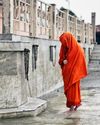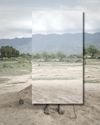BRICK WORKERS FROM BANGLADESH
You can see them all around Bangladesh. There are hundreds of them. Some say more than 15,000. The high chimneys along the rivers and cities pouring constantly smoke into the air. Millions of bricks are burned there. But the price is high and paid by the local and from far coming workers and the environment surrounded by those factories.
Bangladesh is a rapidly urbanizing country having a 163 million population. This generated a very high amount for cheap building materials and gave brickmaking ago. But most of them are illegally built.
In late 2019 excavators flanked by Bangladesh riot police are at work demolishing illegal soot-belching brick kilns around the smog-choked capital Dhaka, forcing migrant laborers out of work and back to their villages. This led to a lot of unemployed people in Bangladesh. Furthermore, authorized brick kilns that are using the soil of hills and arable land for making bricks and using wood as fuel in the kilns will be reported to the court.
The bricks are made almost fully by hand, using ancient technology. The work is demanding – accidents occur often, and the work is hard. Workers get paid for how many bricks they produce or can carry.
For the fast workers, a week’s salary can range between 10 – 15 Euros a week. Nearly one million people work for 12-14 hours a day, almost every day of the week. Many of them live in brick factories. Near almost every factory, there are villages where all the families that work inside the factories live.
This story is from the July 2021 edition of Lens Magazine.
Start your 7-day Magzter GOLD free trial to access thousands of curated premium stories, and 9,000+ magazines and newspapers.
Already a subscriber ? Sign In
This story is from the July 2021 edition of Lens Magazine.
Start your 7-day Magzter GOLD free trial to access thousands of curated premium stories, and 9,000+ magazines and newspapers.
Already a subscriber? Sign In

IN THE SHIPYARDS OF DHAKA
A very large shipyard in Dhaka is located on the Buriganga River's banks, directly across Dhaka's old city.

Aga Szydlik INDIA
A JOURNEY INTO THE LAND OF DIVERSITY, CULTURE, AND COLORS

SEBASTIAN PIÓREK EXPLORING Enjoyable LANDSCAPE
I retrieved the idea of nature closely linked to the field of human feelings.

The Extreme Macro Photography of Bees
AN INTERVIEW SAM WITH, DROEGE

JEAN KAROTKIN GYMNOPEDIES
Gymnopédies, Karotkin's ongoing series of botanical portraits, takes its name from a trio of piano compositions by 19th-century French composer Erik Satie.

BUTTERFLIES IN LOVE WITH FLOWERS
I sometimes think Chinese art is not fully appreciated in the West. I was exposed to it growing up in Australia, although my fascination was more with calligraphy.

Lissa Hahn:
Hahn: HOW TO EVOKE A PAVLOVIAN RESPONSE IN HUMANS

AN EXCLUSIVE INTERVIEW WITH ELENA PARASKEVA
Elena Paraskeva is an internationally acclaimed, award-winning Conceptual Photographer and Art Director and, most recently, an official ADOBE instructor.

From a Living Hell to Heaven on Earth: the Inhumanity and Humanity of Humans
In a remote area of western Wisconsin, dogs and cats who otherwise would have ended up on death row are given a reprieve. They can now live out their lives in peace and comfort and with companionship at Home for Life (HFL), which was not afforded them outside the sanctuary's gates.

The Art of DISAPPEARING
In the classical proposal, indigenous people are usually the topic of discussion, but rarely do they have a hand in shaping it.